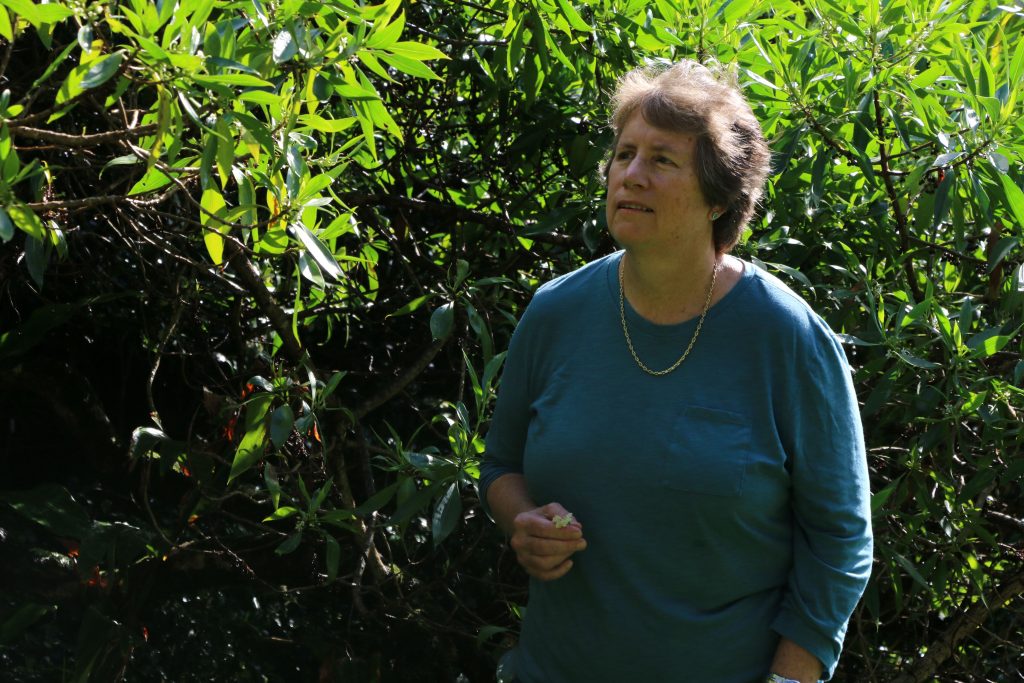07/29/19-NAIO THRIPS ATTACK NATIVE PLANT IN DLNR CHAIR CASE’S YARD
Posted on Jul 29, 2019 in Forestry & Wildlife, Invasive Species, sliderNews Release
| DAVID Y. IGE GOVERNOR |
SUZANNE D. CASE
CHAIRPERSON |
For Immediate News Release: July 29, 2019
Naio Thrips Don’t Discriminate As They Spread Their Destruction of a Native Plant
18-year-old Naio Shrub Removed from DLNR Chair’s Yard after Thrips Attack
To view video please click on photo or view at this link: https://vimeo.com/350794530
(Honolulu) – When DLNR Chair Suzanne Case was alerted by the O‘ahu Invasive Species Committee (OISC) of their desire to do a miconia survey of her property, she readily agreed. Good news – no Miconia (an invasive, noxious weed), Bad news – naio thrips had infested an 18-year-old naio shrub.
Naio thrips are a relatively new pest insect in Hawai‘I (first detected in 2008) that cause scarring and ultimately kill the trees they infect. The thrips are tiny, only 1/20th of an inch long; the first symptom of infection anyone is likely to see is the curling of leafs.
Chair Case explained, “OISC and everyone working on invasive species control is worried about this tiny bug escaping from backyard plants into wild populations. So I give props to the O‘ahu Invasive Species Committee because they are so methodical in doing their surveys, introduced by a letter, an e-mail, and a phone call.” She encourages anyone who receives notification from OISC or any of the other island invasive species committees to respond, for the protection of their own plants and property, as well as for native plants growing on public lands.
For Case, the next step was to arrange a time for an OISC field team to come out and take the bush down. A rapid response plan developed by state and federal partners (DLNR, Dept. of Agriculture, U.S. Fish and Wildlife Service, U.S. Army and the Navy) allows for the immediate removal of plants less than two meters high. Prior to being chopped down these shrubs are sprayed with an insecticidal soap or oil, then branches are carefully clipped off, and put into sealed bags for disposal.
If a wide area is infested or a landowner doesn’t grant permission for removal the rapid response could include chemical control followed by weekly checks for the continued presence of thrips.
Based on her experience, Case added, “OISC does an excellent job and they’re very professional about it. Very knowledgeable and polite. They interact very well with the residents and explain the process very clearly.”
While the naio is now gone, Case notes happily there’s a healthy alaheʻe behind it and an ʻōhiʻa off to the side, and she expects these two native plants will eventually grow in to fill the gap.
You can report invasive species sightings to the 643-PEST telephone hotline, the 643pest.org website, or through the 643-PEST mobile app.
# # #
Media Contact:
Dan Dennison
Senior Communications Manager
(808) 587-0396
[email protected]
